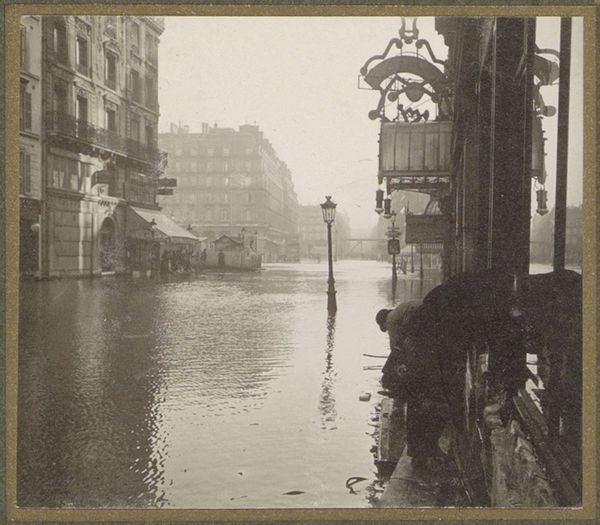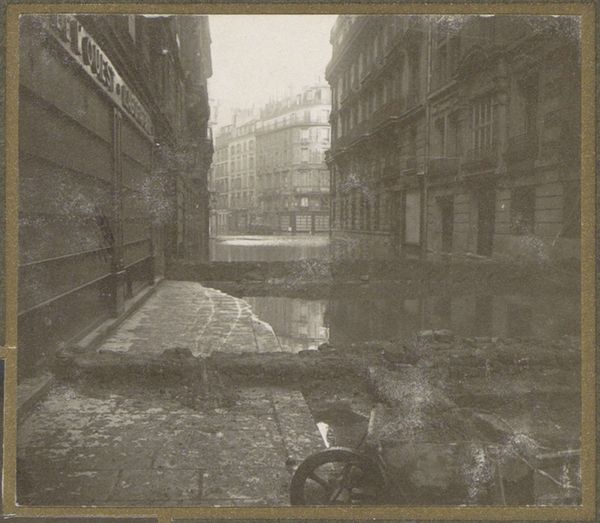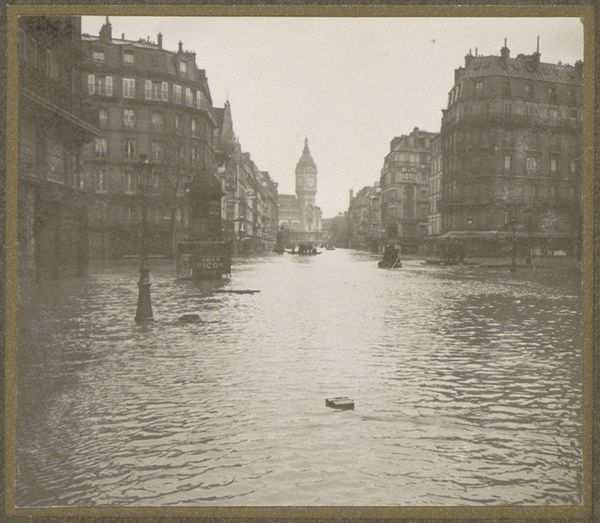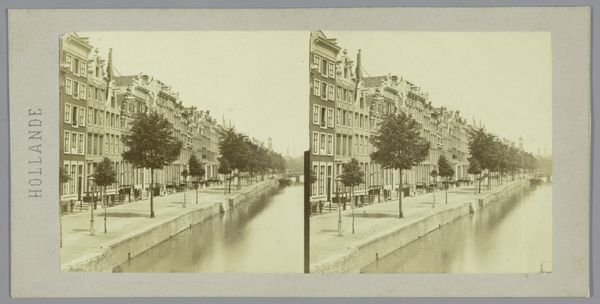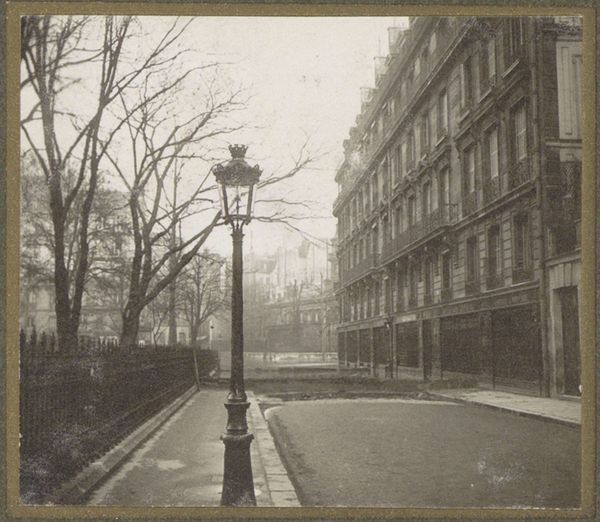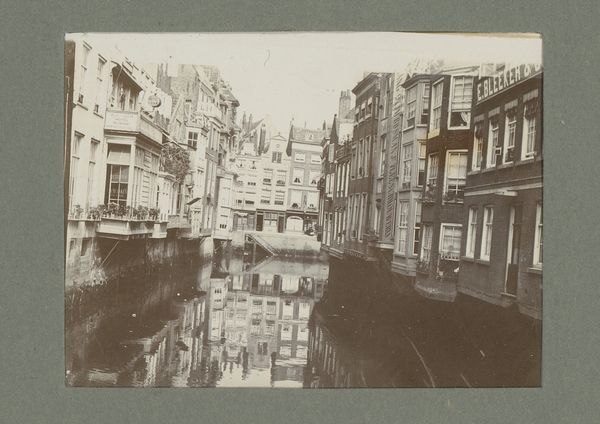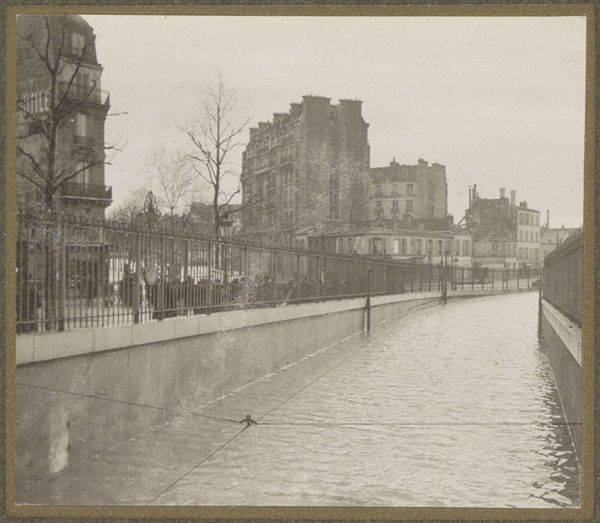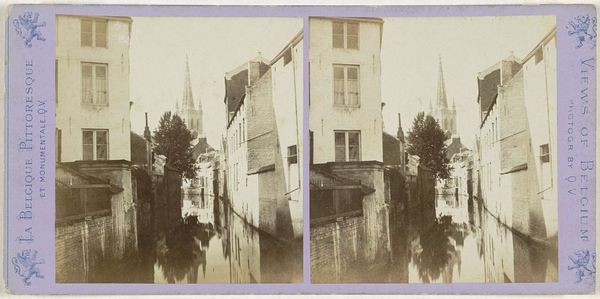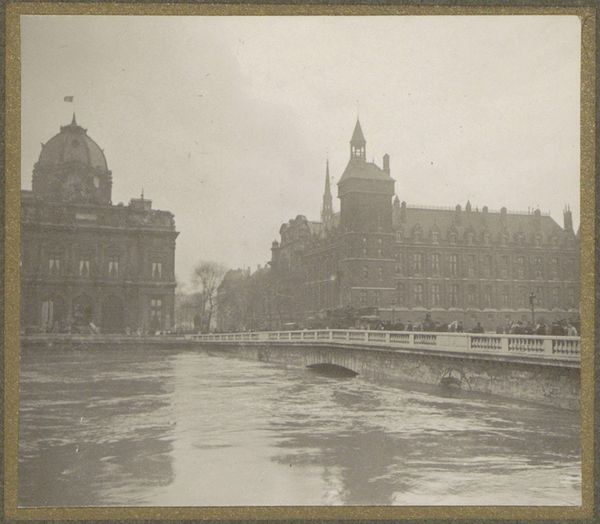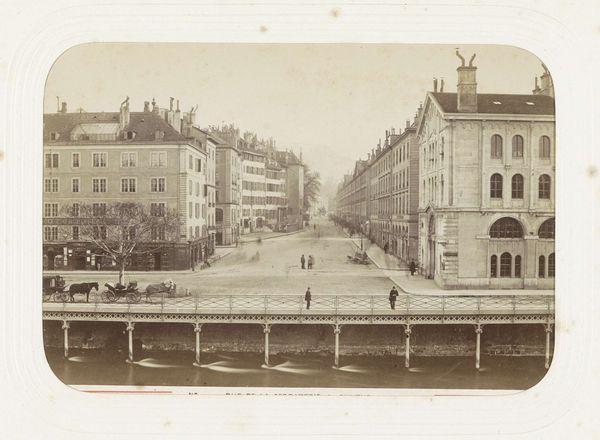
Dimensions: height 52 mm, width 59 mm
Copyright: Rijks Museum: Open Domain
Curator: Before us is a gelatin-silver print by G. Dangereux, entitled "Gedeeltelijk ondergelopen straat tijdens de overstroming van Parijs"—"Partially Flooded Street during the Paris Flood"—dating from 1910 to 1911. Editor: It's immediately striking—the stillness. The flooded street, transformed into a murky canal, creates a dreamlike reflection of the Parisian architecture. The sepia tones only add to this atmosphere. Curator: Dangereux’s choice of gelatin-silver printing allows for a wide tonal range and fine detail, crucial for capturing the nuanced textures of the water and the architecture, very common for documentary photography and printing in this period. Editor: Indeed. The formal composition emphasizes the vertical lines of the buildings against the horizontal expanse of water. The light, muted by the overcast sky, contributes to the melancholic mood. There’s a definite Pictorialist influence evident. Curator: Right, though the “Realist” tag may give a sense of straight documentary. In a way, the piece reveals a societal vulnerability through a manipulation of the photographic medium itself. The materials, the darkroom techniques... all point to specific labor. Think of the people affected. Editor: Yet, I find the scene aesthetically balanced despite the disaster it depicts. The muted tones and composition are the more impactful visual features. Curator: Absolutely, and we must remember that access to photographic materials and techniques would be available mostly to wealthier inhabitants of the city. Even the act of creating such work, especially amidst a crisis, tells us something. Editor: Seeing Paris like this makes you question assumptions. The beautiful Haussmann architecture stands defiant against what seems to be a great tragedy; this creates interesting tensions within the composition of this photo. Curator: Indeed. This image grants a fascinating insight into Paris's history and speaks volumes regarding production methods and our relationship to disasters both natural and manufactured. Editor: It encourages us to consider not just what we are seeing, but how the formal arrangement of visual elements shapes our perception of reality.
Comments
No comments
Be the first to comment and join the conversation on the ultimate creative platform.
